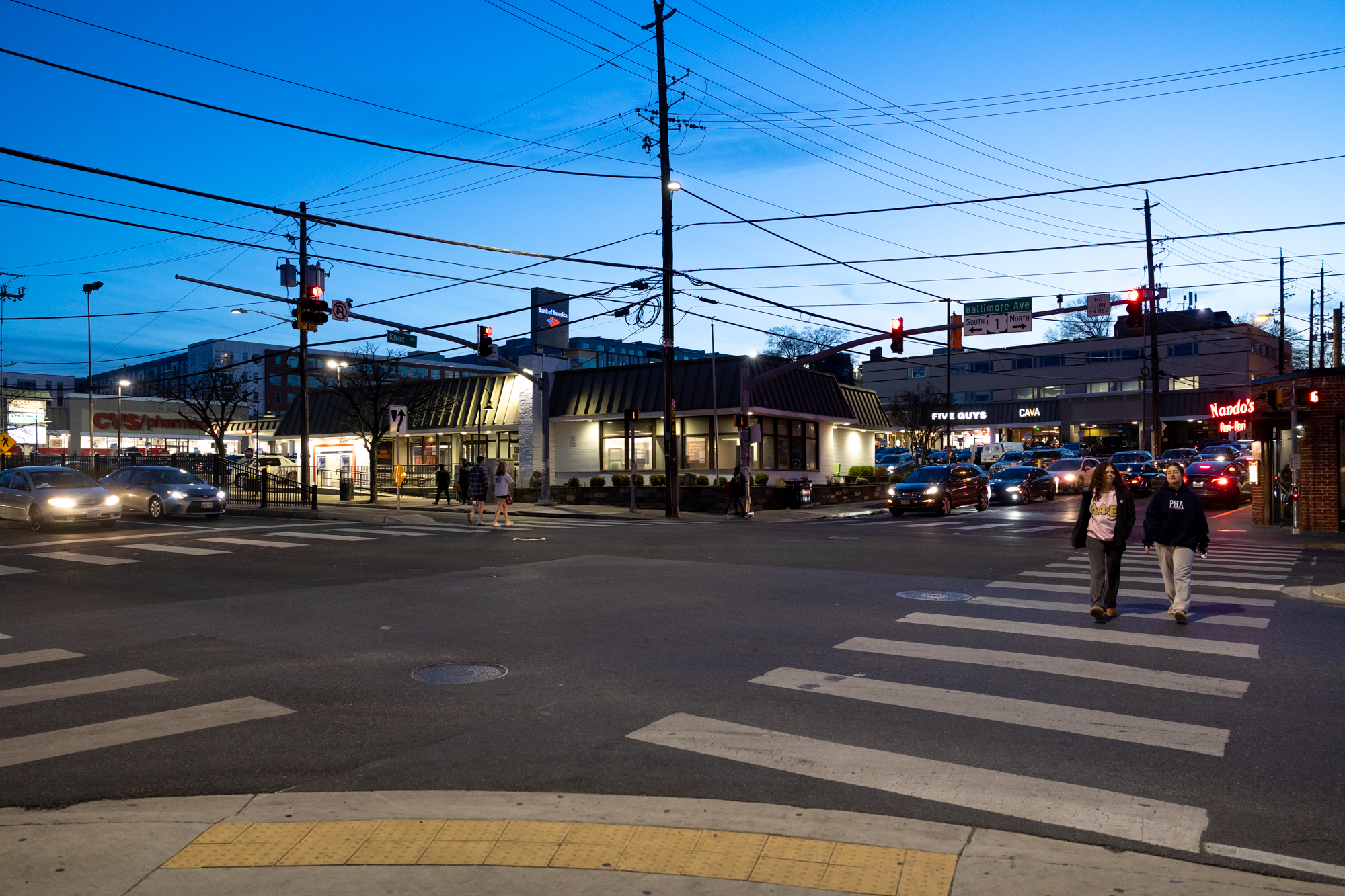Views expressed in opinion columns are the author’s own.
Why do we love walkable cities?
For one, it means we don’t have to rely on cars. We are not beholden to fluctuating gas prices and monthly insurance payments, nor do we need to think about vehicle maintenance. We can access shops, restaurants and other hotspots with ease. We can mingle with members of the community. We have a space that enhances a sense of place, which is difficult to say of car-centric societies.
College campuses like the University of Maryland’s are condensed versions of walkable cities. It seems to me so many students love their schools because of that proximity — and the common identity that accompanies it.
The College Park City Council recently had the opportunity to expand that community by creating a pedestrian plaza on Knox Road, but chose not to move forward with those plans without further traffic studies. The council is still considering closing Knox Road temporarily during some events.
Partially closing the road promotes a version of a walkable city that College Park should aspire to — for the sake of all its residents.
The pandemic completely changed how we thought about urbanism and cars. Once bustling roads became sanctuaries for pedestrians. Once intimidating streets became lined with outdoor eateries and were teeming with cyclists and rollerbladers. As such, 35 states experimented with road closures in 2020 and 2021.
Gradually, the status quo of a car-first society shifted. Even now, after the pandemic has eased and road closures have become less frequent, we are at a watershed moment in the national conversation on public spaces.
There is good reason to believe that we should listen to our pandemic lessons. Both nationally and locally, we reaped the benefits of pedestrian-centric planning. Nearby Maryland cities like Wheaton, Silver Spring, Bethesda and Takoma Park closed parkways, which allowed “streeteries” to flourish and created connections between community members. The closure of Rock Creek Park’s Beach Drive — now permanent due to its popularity — gave locals space to enjoy nature. Across the country, “slow streets” breathed new life into places that had once been socially isolated.
Closing Knox Road upholds the same vision of a pedestrian-focused city we enjoyed so much during the pandemic. Students could mingle and enjoy the space without fear of cars. A pedestrian-only plaza would create a vibrant urban environment, one that would be supplemented by the already thriving student presence.
Beyond the positive social benefits of walkable cities and road closures is another practical plus: safety.
The section of Knox Road proposed for the pedestrian plaza intersects with Route 1, and on the weekends, it serves as a hotspot for student nightlife. Students pack the streets during dark hours and are in danger of stepping or falling into oncoming traffic due to the high volume of people and cars.
Maryland was the top fifteenth state for pedestrian fatalities in 2020, while nationally, a whopping 77 percent of pedestrian deaths due to vehicle crashes happen at night. Prince George’s County in particular is home to a number of “high injury” corridors and pedestrian-related accidents. College Park has the opportunity to diminish those scary statistics and play a part in reducing a countywide problem. Ultimately, student safety should be in the best interest of this city.
A partial closure of Knox Road is only one of many measures needed to actualize a pedestrian-friendly College Park. Another option is widening sidewalks, which would entail taking out a lane of traffic on a road like Route 1. The result would lead to more outdoor space for pedestrians and off-street dining options.
The city could also engage in more beautification efforts by commissioning murals or street art to attract pedestrians, not cars. In Waco, Texas, the city created a pedestrian walkway and plaza filled with colorful installations, a mural and spaces for activities. The project yielded a 30 percent increase in pedestrian activity and 23 percent decrease in traffic speeds.
While council members did not come to a conclusion on if or how long the section of Knox Road would be closed, other cities offer a vision for what that closure could look like. In another college town — Ann Arbor, Michigan — the city council implemented closures on its main street starting on Thursday evenings and ending on Monday mornings. This widely-supported policy would align well with College Park, since it takes advantage of weekends when students don’t have classes.
It’s imperative that the College Park City Council adopt a pedestrian-first mindset, not a car-first one, if it is to become a more livable, walkable city. Closing part of Knox Road could pave the way for greater community use of public streets — a benefit that we would all enjoy.
Tara Davoodi is a sophomore government and politics major. She can be reached at tdavoodi@terpmail.umd.edu.



